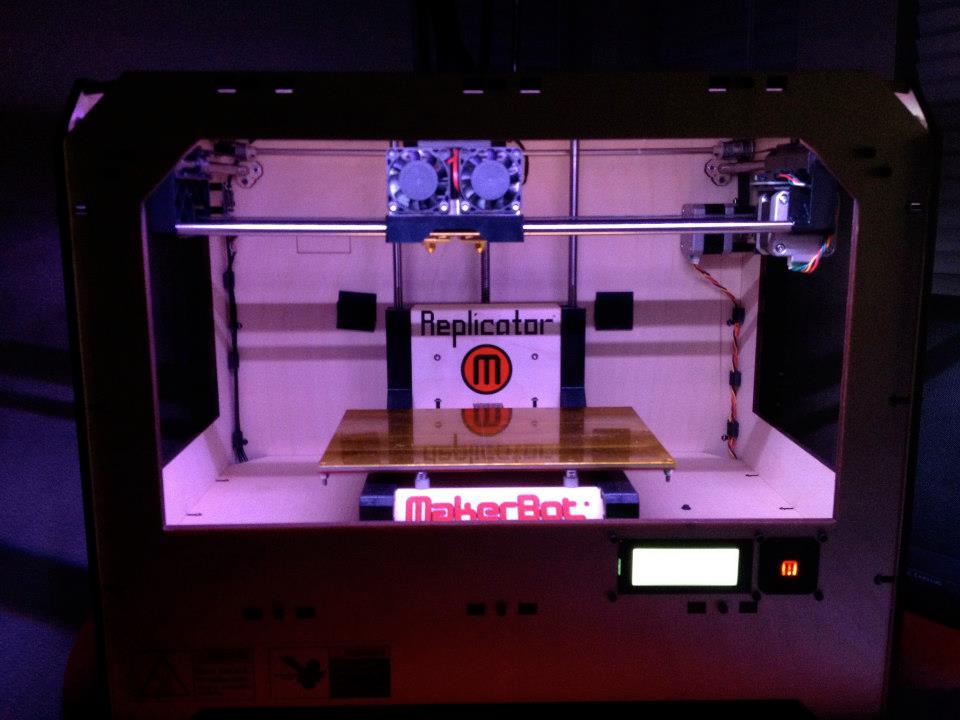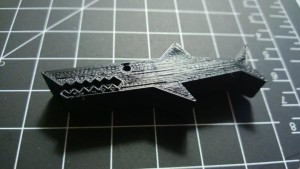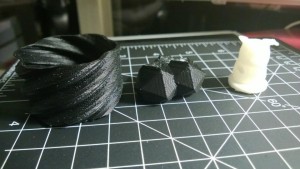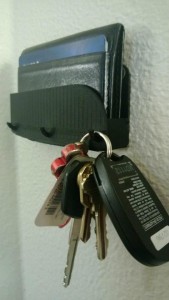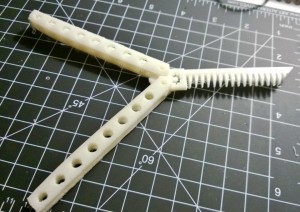TL;Dr: There’s a learning curve, but I believe that the increasing availability of content creation tools, the network effects of content creation and sharing communities, and the sheer utility of being able to make anything you can think of, will inspire more to seek out the skills necessary to participate. For a tinkerer like me, the simple joy of turning idea into matter, or something more purposeful, like replacing a broken knob or a missing shower curtain, are all are fun opportunities to make rather than buy what I need.
Today marks three years since I got my first 3d printer, a Makerbot Replicator. Since then, I’ve printed hundreds of hours worth of things and designed a few of my own for practical or artistic purposes. It’s mostly a hobbyist’s tool now, but I’m convinced that the creation of items via 3d printer will become a mainstream experience in the near future.
As any hobby, it has it’s challenges, but it’s also highly fulfilling and focused on the act of creating. I’ll often find myself preferring to choose a home made solution over a purchased product. It’s not always economical–at prices around $50/kg, the raw material is not cheap, but that amount can go quite a long way when you’re printing small things in plastic. Whether it’s a fun trinket, or a useful tool, 3d printed objects have a wide range of applications in everyday life.
I keep my Replicator at home, so I’ve had it available whenever I feel the creative urge. I’ll admit, there are long periods of time when it’s gathering dust, for those times when I do have it, I’m quite glad that I do. Other times, it’s just a cool conversation piece in the living room. And it’s (mostly) a lot of fun! Other times, I want to set it on fire.
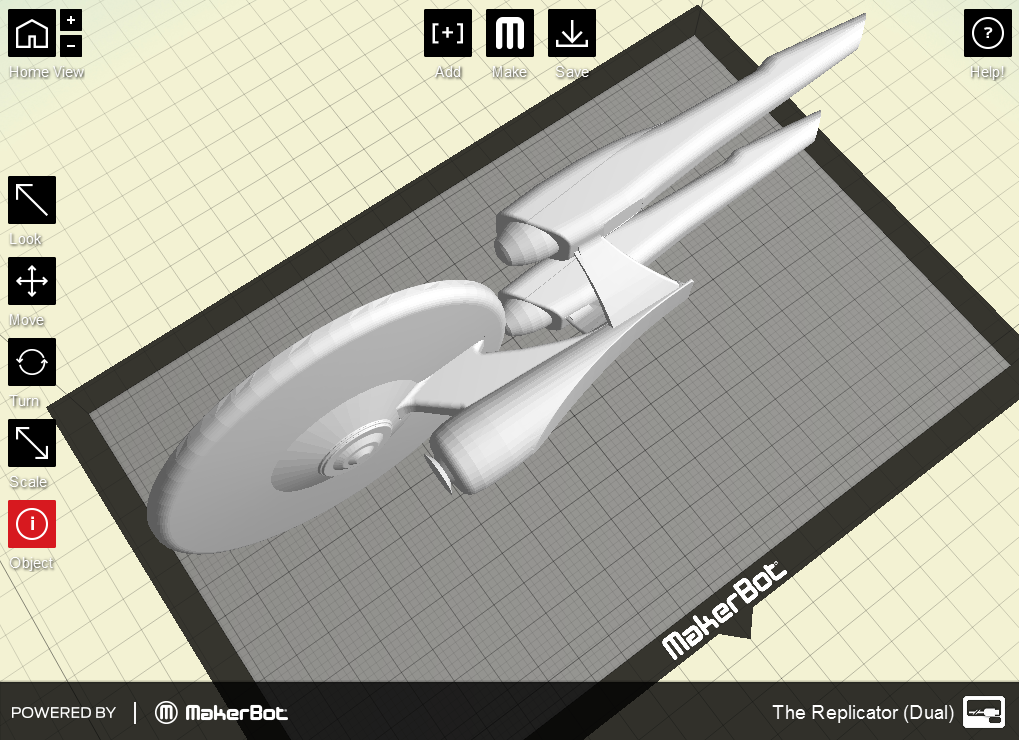
My first experience with 3d printing was in a mechanical engineering course I took while at Illinois. We had access to many tools used during product prototyping and made use of Autodesk Inventor–my favorite parametric modeling tool–to create models for the course, and as candidates for 3d printing. I loved the idea of being able to take an idea and turn it into a physical object without going through the hurdles of traditional manufacturing. Still, that 3d printer was $30,000, and always scheduled out so far in advance, that access wasn’t practical for the range of casual applications I was considering.
I imagine this mirrors the early days of computing at universities and corporations, when access to computer time was a valuable commodity. This was in 2005, after all. Then, 3d printing was one of the advanced prototyping tools available to lucky mechanical and structural engineers, not so much the casual creator or artist with grand vision and perhaps a deft hand on 3ds max (another favorite modeling tool of mine). Amazing what a few years can bring.
Fast-forward to 2012, and Makerbot had just announced their second consumer product, the Makerbot Replicator. With the declared their early intent of focusing their product at small business and even consumer price points, their message was clear: 3d printing was quickly becoming accessible to the masses. I decided to make the investment (no small sum, $2,250 at the time for the dual-extrusion model I have), and while I can’t say it’s for everyone, it’s definitely a cool tool to have around. Since then, other players have come on the scene, bringing down the price of 3d printing even further.
Bre and Makerbot’s message that the tools of manufacturing was coming to the masses, was highly appealing, particularly to those like me with hopes of creating and tinkering with things in the physical realm. Makerbot took it a step further by creating Thingiverse, the online platform for sharing and remixing “things”. It’s the 2010s and “content” is social; the act of creating is rarely a solitary affair, and there are a variety of platforms for people that love to create to share their wares. Some of them, like Thingiverse are free and geared toward educational uses, while others like Shapeways are more commercial.
I love being able to find what others have made and shared up on on community sites like Thingiverse. I love even more that we’ve now bridged the gap between idea and physical good. There’s a learning curve, but I believe that the increasing availability of tools, the network effects of communities of content creators, and the sheer utility of being able to make anything you can think of, will inspire more to seek out the skills necessary to participate. For a tinkerer like me, the simple joy of turning idea into matter, or something more purposeful, like replacing a broken knob or a missing shower curtain, are all are fun opportunities to make rather than buy what I need.
Some things I’ve printed:
- Shower hooks – I was still using shower curtain hooks I got at IKEA in my post-college years, and over time, some had gone missing some. I put up with it for while but the girlfriend told me that it looked really sad. So after contemplating going to Bed Bath and Beyond, I found these on Thingiverse. Rather than spending $10 on a dozen or so shower curtain hooks that I didn’t need, I printed a a few, and tada, problem solved! The mentioned post also reminded me of this truth: “You’re a MakerBot owner. You live for these moments.” Indeed.
- Key and Wallet Holder – I made this to solve a very annoying problem of mine–misplacing my wallet and/or keys at home. I wear a myriad of outer wear, and would often spent a few minutes looking for my stuff before heading out for the day. Cumulatively, I must have spent hours looking for my commonly used items, not to mention the annoyances caused by being delayed in the morning. I designed and made this, and solved my problem. I’m also pleased to know that at least 250 others have found it useful.
- Cat Toy Sword Handle – This was originally meant by the designer to be an umbrella hilt, but I found a better purpose in fashioning a cat toy sword out of it.
- And others, including: Smartphone stand, jewelry mockups, Ar.Drone parts, custom shaped clips, custom attachments, obscure knobs and levers, bookends, toy models, robot frame parts, etc…
Here are some examples of prints there I’ve printed. Some are my own, the rest are from Thingiverse. Find me on Thingiverse at http://www.thingiverse.com/skyrien.
So that’s it, consider this my resounding endorsement for 3d printers–that if you have the means to afford one, and the patience to learn a new skill to a hobby-grade or more, you will find 3d printing a high enjoyable pastime, and tool to add to your creation toolset. Especially true if you possess 3d modeling skills, or access to a 3d scanner.
